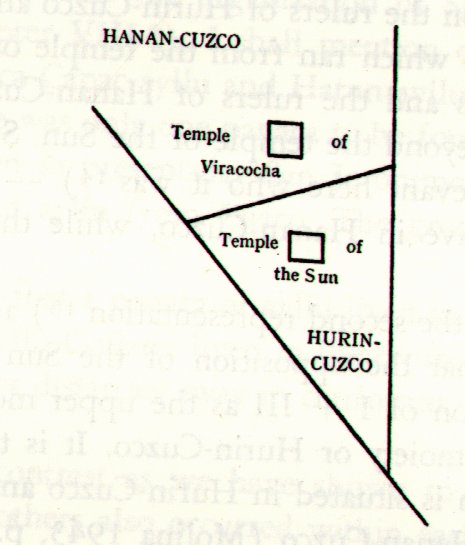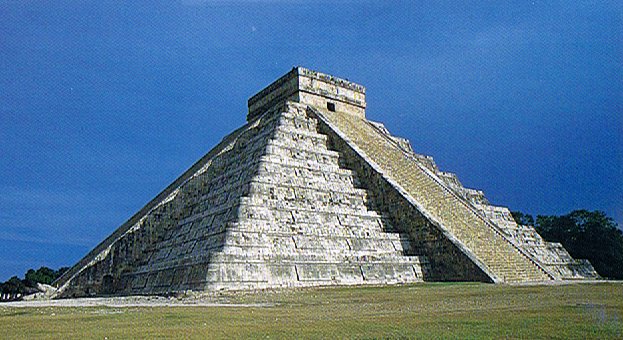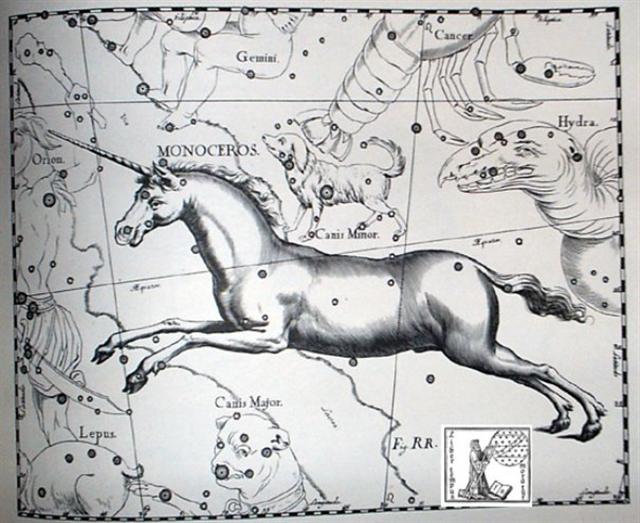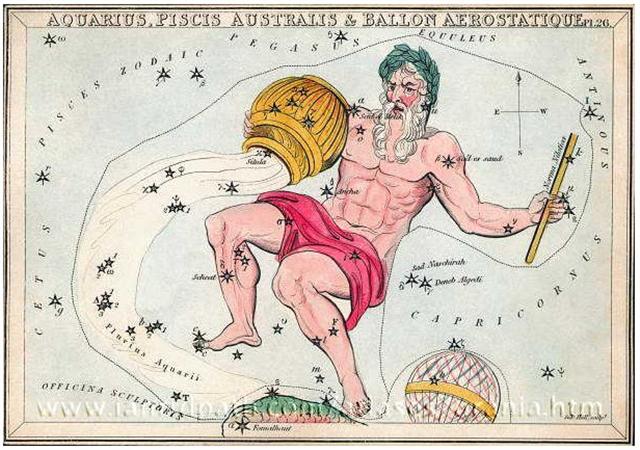My
idea
of a
pair
of
'lands'
described
in
the
G
text
gains
support,
I
think,
from
the
glyphs
at
the final
phase
(ν)
of
the
'grasping
hand
of
the
swallower'
-
they
are
similar
to
the
pair
of
glyphs
at
the
northern
midsummer:

| 9 * 14 = 364 |
●NOVEMBER 15 (ф300) |
16 (320) |
 |
 |
 |
| Gb1-20 (249) |
Gb1-21 |
Gb1-22 |
| NOVEMBER 25 (329) |
26 |
27 |
| μ², μ¹ Oct. (313.2), Deneb Cygni (313.5), β Pavonis (313.6), δ Delphini (313.8) |
Al Sa’d al Bula'-21 / Dhanishta-24 / Girl-10 |
Baten Algiedi (315.8) |
| Yue (314.3), Gienah Cygni, η Cephei (314.5), γ Delphini (314.6), σ Pavonis (314.7), ALBALI (314.8)
Betelgeuze
|
| January 28 (393) |
29 (*314) |
30 |
| 'January 1 (366) |
2 |
3 (*288) |
| NAKSHATRA DATES: |
| ●MAY 16 (136) |
17 (ф118) |
18 (*58) |
| MAY 27 |
28 (148) |
29 |
| Extended Net-26a / Arkū-sha-nangaru-sha-shūtu-13 |
ι Cancri (132.0), ρ Hydrae (132.4) |
no star listed (133) |
| η Hydrae (131.0), ASCELLUS AUSTRALIS (131.4), Koo She (131.6), ε HYDRAE (131.9) |
| July 30 |
31 (212) |
August 1 |
| 'July 3 (184) |
4 |
5 |
| ●NOVEMBER 17 |
18 |
19 |
20 (324) |
21 (*245) |
 |
 |
 |
 |
 |
| Gb1-23 |
Gb1-24 |
Gb1-25 |
Gb1-26 |
Gb2-1 (256) |
| NOVEMBER 28 |
29 (ф314) |
30 (*254) |
DECEMBER 1 |
2 (336) |
| μ Aquarii (316.0) |
ε Equulei (317.8) |
no star listed (318) |
21h (319.6) |
Dramasa, χ Capricorni (320.0), ν Aquarii (320.3), γ Equulei (320.6), ο Pavonis (320.8) |
| Armus (319.0), Dorsum (319.3), Tsoo (319.7) |
| January 31 (396) |
February 1 |
2 |
3 |
4 (400) |
| 'January 4 |
5 |
6 |
7 (372) |
8 (*293) |
| NAKSHATRA DATES: |
| ●MAY 19 |
20 (140) |
21 (*61) |
22 (ф123) |
23 |
| MAY 30 |
31 (151) |
JUNE 1 (ф111) |
2 |
3 (154) |
| ζ Hydrae (134.1), ρ Cancri (134.2), ζ Oct. (134.3), ο Cancri (134.6) |
Acubens, Talitha Borealis (135.0), σ Cancri (135.2), ρ Ursa Majoris (135.6) |
ν Cancri (136.0), Talitha Australis (136.1), ω Hydrae (136.8) |
9h (137.0) |
no star listed (138) |
| σ¹ Ursa Majoris (137.0), κ Cancri (137.3), τ Cancri (137.4), Alsuhail (137.5), σ² Ursa Majoris (137.6), τ Ursa Majoris (137.7), ξ Cancri (137.8) |
| August 2 |
3 |
4 (216) |
5 |
6 |
| 'July 6 (*107) |
7 |
8 |
9 (ф171) |
10 (191) |
The
distance
from
June
22
to
February
4
was
400
-
173
=
227
days
(referring
to
22 /
7 =
π).
According
to
Bayer
and Hevelius
the
left
arm
of
Aquarius
may
have
represented
a
'serpent
fish',
or
eel:
| Egyptian cobra in repose |
 |
Phoenician nūn |
 |
Greek nu |
Ν (ν) |
|
... Nun is thought to have come from a pictogram of a snake (the Hebrew word for snake, nachash begins with a Nun and snake in Aramaic is nun) or eel.
Some have hypothesized a hieroglyph of a fish in water for its origin (in Arabic, nūn means large fish or whale). The Phoenician letter was named nūn 'fish', but the glyph has been suggested to descend from a hypothetical Proto-Canaanite nahš 'snake', based on the name in Ethiopic, ultimately from a hieroglyph representing a snake.
... Nahš in modern Arabic literally means 'bad luck'. The cognate letter in Ge'ez and descended Semitic languages of Ethiopia is nehas, which also means 'brass'. |
... Here in the Tuamotu we tell of the rivalry of Maui and the eel-god known as Tuna. These two compared their force for Hina's sake, and Maui won.
Afterwards, seeing grey hairs on his mother's head, Maui wished to conquer death; but men cannot do this ...
Brass
is
the
opposite
of
gold.
The
star
Nunki
announced
the
arrival
of
the
Sea
5
days
before
the
beginning
of
side
b.
This
sky
place was
close
to
the
Full
Moon
in
July
5 (185):
| ●OCTOBER 15 |
16 (ф270) |
17 (290) |
18 |
19 |
20 |
 |
 |
 |
 |
 |
 |
| Ga8-16 |
Ga8-17 (220) |
Ga8-18 |
Ga8-19 |
Ga8-20 |
Ga8-21 |
| OCTOBER 26 |
27 (300) |
28 |
29 |
30 |
31 |
| ζ Pavonis (283.4), λ Cor. Austr. (283.6), Double Double (283.7), ζ Lyrae (283.8) |
South Dipper-8 |
Sheliak, ν Lyrae (285.1), λ Pavonis (285.7) |
χ Oct. (286.0), Ain al Rami (286.2), δ Lyrae (286.3), κ Pavonis (286.5), Alya (286.6) |
ξ Sagittarii (287.1), ω Pavonis (287.3), ε Aquilae, ε Cor. Austr., Sulaphat (287.4), λ Lyrae (287.7), Ascella, Bered (Ant.) (287.9) |
Al Na'ām-18 / Uttara Ashadha-21 |
| Φ SAGITTARII (284.0), μ Cor. Austr. (284.6), η Cor. Austr., θ Pavonis (284.8) |
NUNKI (288.4), ζ Cor. Austr. (288.5), Manubrium (288.8), ζ Aquilae (288.9) |
| December 29 |
30 (364) |
31 |
January 1 |
2 |
3 |
| NAKSHATRA DATES: |
| ●APRIL 16 |
17 (107) |
18 |
19 |
20 |
21 (ф92) |
| APRIL 27 (482) |
28 |
29 (ф100) |
30 (120) |
MAY 1 |
2 |
| SIRIUS (101.2), ψ5 Aurigae (101.4), ν Gemini (101.6), ψ6 Aurigae (101.7) |
τ Puppis (102.2), ψ7 Aurigae (102.4) |
θ Gemini (103.0), ψ8 Aurigae (103.2), Alhena (103.8), ψ9 Aurigae (103.9) |
Adara (104.8) |
ω Gemini (105.4), Alzirr (105.7), Muliphein, Mekbuda (105.8) |
7h (106.5) |
| no star listed (106) |
| June 30 |
July 1 (182) |
2 |
3 |
4 |
5 |
| ●OCTOBER 21 |
22 (295) |
23 |
24 |
25 |
 |
 |
 |
 |
 |
| Ga8-22 |
Ga8-23 |
Ga8-24 (227) |
Ga8-25 |
Ga8-26 |
| NOVEMBER 1 |
2 (306) |
3 |
4 |
5 (ф290) |
| 19h (289.2) |
Al Baldah-19 |
Aladfar (291.1), Nodus II (291.5), ψ Sagittarii (291.6), θ Lyrae (291.8) |
ω Aquilae (292.1), ρ Sagittarii (292.6), υ Sagittarii (292.7) |
Arkab Prior (293.0), Arkab Posterior, Alrami (293.2), χ Sagittarii (293.6) |
| λ Aquilae (Ant.) (289.1), γ Cor. Austr (289.3), τ Sagittarii (289.4), ι Lyrae (289.5), δ Cor. Austr. (289.8) |
AL BALDAH, Alphekka Meridiana (290.1), β Cor. Austr. (290.2) |
| January 4 |
5 (370) |
6 |
7 |
8 (ф354) |
| NAKSHATRA DATES: |
| ●APRIL 22 |
23 |
24 |
25 (ф461) |
26 (116) |
| MAY 3 (123) |
4 |
5 |
6 (ф472) |
7 (492) |
| WEZEN (107.1), τ Gemini (107.7), δ Monocerotis (107.9) |
no star listed (108) |
λ Gemini (109.4), Wasat (109.8) |
no star listed (110) |
Aludra (111.1), Propus (111.4), Gomeisa (111.6) |
| July 6 |
7 |
8 |
9 (190) |
10 (ф172) |
The 10 last glyphs on side a may have been like the border between Upper and Lower Egypt or between Hanan and Hurin:

The Temple of the Sun was in the lower place - where 'Fire' was inside his 'House' and thus protected from the accumulated surrounding waters. Viracocha (Kukulkan) was in a house high up in the north but he emerged at equinox:

... Behind me, towering almost 100 feet into the air, was a perfect ziggurat, the Temple of Kukulkan. Its four stairways had 91 steps each. Taken together with the top platform, which counted as a further step, the total was 365. This gave the number of complete days in a solar year. In addition, the geometric design and orientation of the ancient structure had been calibrated with Swiss-watch precision to achieve an objective as dramatic as it was esoteric: on the spring and autumn equinoxes, regular as clockwork, triangular patterns of light and shadow combined to create the illusion of a giant serpent undulating on the northern staircase ...
The first ure glyph in the text was in December 30. December 30 was day 364 = 4 * 91 - unless we should count to 365 by beginning with December 31 (the top platform) in the previous year. In the latter case the Winnowing Basket would be in day 354 (= 12 * 29½):
| 7 |
Winnowing Basket |
γ Sagittarii (Nash) |
Leopard |
(273.7) |
Dec 19 (353) |
353 = 334 + 19 |
| December solstice |
| 8 |
South Dipper |
φ Sagittarii (?) |
Unicorn |
(284.0) |
Dec 30 (364) |
364 = 353 + 11 |

The Unicorn was in the middle between Canis Major and Canis Minor, with its front 'paws' on the river bank of the Milky Way, just as the Sea Beast had his on the river bank of Eridanus:

In
another
presentation
the
river
water
is
contrasted
with
a
stick:
It
is a
nilometer,
used
for
measuring
the
depth
of
the
Nile.

It
was
Sirius
who
made
the
Nile
rise:
| ●OCTOBER 15 |
16 (ф270) |
17 (290) |
18 |
19 |
20 |
 |
 |
 |
 |
 |
 |
| Ga8-16 |
Ga8-17 (220) |
Ga8-18 |
Ga8-19 |
Ga8-20 |
Ga8-21 |
| OCTOBER 26 |
27 (300) |
28 |
29 |
30 |
31 |
| ζ Pavonis (283.4), λ Cor. Austr. (283.6), Double Double (283.7), ζ Lyrae (283.8) |
South Dipper-8 |
Sheliak, ν Lyrae (285.1), λ Pavonis (285.7) |
χ Oct. (286.0), Ain al Rami (286.2), δ Lyrae (286.3), κ Pavonis (286.5), Alya (286.6) |
ξ Sagittarii (287.1), ω Pavonis (287.3), ε Aquilae, ε Cor. Austr., Sulaphat (287.4), λ Lyrae (287.7), Ascella, Bered (Ant.) (287.9) |
Al Na'ām-18 / Uttara Ashadha-21 |
| Φ SAGITTARII (284.0), μ Cor. Austr. (284.6), η Cor. Austr., θ Pavonis (284.8) |
NUNKI (288.4), ζ Cor. Austr. (288.5), Manubrium (288.8), ζ Aquilae (288.9) |
| December 29 |
30 (364) |
31 |
January 1 |
2 |
3 |
| NAKSHATRA DATES: |
| ●APRIL 16 |
17 (107) |
18 |
19 |
20 |
21 (ф92) |
| APRIL 27 (482) |
28 |
29 (ф100) |
30 (120) |
MAY 1 |
2 |
| SIRIUS (101.2), ψ5 Aurigae (101.4), ν Gemini (101.6), ψ6 Aurigae (101.7) |
τ Puppis (102.2), ψ7 Aurigae (102.4) |
θ Gemini (103.0), ψ8 Aurigae (103.2), Alhena (103.8), ψ9 Aurigae (103.9) |
Adara (104.8) |
ω Gemini (105.4), Alzirr (105.7), Muliphein, Mekbuda (105.8) |
7h (106.5) |
| no star listed (106) |
| SIRIUS |
July 1 (182) |
2 |
3 |
4 |
5 |
The last ure (water serpent) is in Gb8-24 (465), i.e. 245 glyphs beyond Ga8-17 (220). Counting with 472 (including the empty glyph space between the end of side b and the beginning of side a) as the whole cycle, we can see that the dry part should be 472 - 245 = 227 (obviously referring to π).
| ●FEBR 24 |
25 |
26 |
27 (58) |
28 |
●MARCH 1 |
2 (ф42) |
 |
 |
 |
 |
 |
 |
 |
| (229 or 2 * 229) |
Gb8-18 |
Gb8-19 (460) |
Gb8-20 |
Gb8-21 |
Gb8-22 |
Gb8-23 (235) |
| MARCH 7 |
8 |
9 |
10 (*354) |
11 (70) |
12 |
13 (ф53) |
| ALGENIB PERSEI (50.0), ο Tauri (50.2), ξ Tauri (50.8) Gienah
|
no star listed (51) |
no star listed (52) |
no star listed (53)
Acrux
|
no star listed (54) |
Al Thurayya-27 / Krittikā-3 / Hairy Head-18 / Temennu-4 |
| Atiks, Rana (55.1), CELAENO, ELECTRA, TAYGETA (55.3), MAIA, ASTEROPE, MEROPE (55.6) |
ALCYONE (56.1), PLEIONE, ATLAS (56.3) |
| TAU-ONO |
| May 10 (ф111) |
11 |
12 |
13 |
14 |
15 (500) |
16 (136) |
| 'April 13 (ф84) |
14 |
15 |
16 (471) |
17 (107) |
18 |
19 (*29) |
| "March 30 (ф70) |
31 |
"April 1 |
2 (92) |
3 |
4 |
5 (*15) |
| NAKSHATRA DATES: |
| ●AUGUST 26 |
27 |
28 |
29 (*161) |
30 (242) |
31 (ф224) |
●SEPT 1 |
| SEPTEMBER 6 |
7 |
8 |
9 (*172) |
10 |
11 (ф235) |
12 (255) |
| Alkalurops (233.1) |
Nusakan (234.0), κ¹ Apodis (234.3), ν Bootis (234.7) |
θ Cor. Borealis (235.3), γ Lupi (235.6), Gemma, Zuben Elakrab, Qin, ε Tr. Austr. (235.7), μ Cor. Borealis (235.8)
Sirrah
|
φ Bootis (236.2), ω Lupi (236.3), ψ¹ Lupi (236.7), ζ Cor. Borealis (236.9) |
ι Serpentis (237.4), ρ Oct., ψ² Lupi (237.5), γ Cor. Borealis (237.7), Unuk Elhaia (237.9) |
π Cor. Borealis, Cor Serpentis (238.1), Chow (238.6) |
κ Serpentis (239.3), δ Cor. Borealis, Tiānrǔ (239.5), χ Lupi, (239.6), ω Serpentis (239.7), Ba, χ Herculis (239.8). κ Cor. Borealis, ρ Serpentis (239.9) |
| November 9 |
10 (314) |
11 |
12 (*236) |
13 |
14 |
15 |
| 'October 13 |
14 (ф268) |
15 (288) |
16 |
17 (*210) |
18 |
19 |
| "September 29 |
30 (*193) |
"October 1 |
2 (275) |
3 |
4 (ф258) |
5 |
 |
 |
 |
 |
 |
 |
 |
| Gb8-24 (236) |
Gb8-25 (466) |
Gb8-26 |
Gb8-27 |
Gb8-28 |
Gb8-29 |
Gb8-30 |
| 3-14 |
MARCH 15 |
16 (*360) |
17 |
18 (77) |
19 (443) |
20 (*364) |
| Menkhib (57.6)
Porrima
|
Zaurak (58.9) |
λ Tauri (59.3), ν Tauri (59.9) |
4h (60.9) |
no star listed (61) |
Beid (62.2)
Vindemiatrix
|
Al Dabarān-2 |
| no star listed (60)
Cor Caroli
|
HYADUM I (63.4) |
| May 17 (137) |
18 |
19 (*424) |
20 |
21 |
22 |
23 (*428) |
| 'April 20 |
21 (111) |
22 |
23 |
24 |
25 (*400) |
26 (*36) |
| "April 6 |
7 |
8 |
9 (464) |
10 (100) |
11 |
12 (*22) |
| NAKSHATRA DATES: |
| SEPTEMBER 13 |
14 (*177) |
15 |
16 |
17 (260) |
18 |
19 |
| β Tr. Austr. (240.3), κ Tr. Austr. (240.4), ρ Scorpii (240.8) |
Iklīl al Jabhah-15 / Anuradha-17 / Room-4 |
υ Herculis (242.3), ρ Cor. Borealis (242.4), ι Cor. Borealis (242.5), ξ Scorpii (242.7)
Schedir
|
16h (243.5) |
ψ Scorpii (244.6), Lesath (244.8) |
χ Scorpii (245.1), Yed Prior, δ Tr. Austr. (245.5) |
Yed Posterior, Rukbalgethi Shemali (246.6). δ Apodis (246.7), ο Scorpii (246.8) |
| (241.1), Zheng (241.2), VRISCHIKA (241.3), ε Cor. Borealis (241.5), Dschubba (241.7), η Lupi (241.9) |
Acrab, Jabhat al Akrab (243.3), θ Lupi, Rutilicus (243.5), Marfik (243.7), φ Herculis (243.8) |
| November 16 |
17 |
18 (*242) |
19 |
20 |
21 |
22 (326) |
| 'October 20 |
21 (*214) |
22 (295) |
23 |
24 |
25 |
26 |
| "October 6 |
7 (*200) |
8 |
9 |
10 |
11 |
12 (285) |
The dry upper 'land' was beginning beyond MARCH 14 (beyond heliacal Alcyone) and the lower wet 'land' was beginning beyond Sirius when December 30 (364) was close to the Full Moon. The heliacal stars at the time of the Hyades Gate marked where the spring rains ended and the Sun calendar where the spring rains would begin anew. ... Inland eel here - manly thing! / Eel of the sea there - watery thing! / I here am a woman for the eel-shaped one, / I have come to find him at Raronuku, / I have come to find him at Raro vaio. / Your fame, O Tane tribe, is known to me! ... Though this is possibly the most ancient and most remote in origin of all Polynesian myths, referring as it does to that one who in our Genesis was 'more subtle than any other wild creature that the Lord God had made', its meaning has usually been disguised in printed versions on grounds of delicacy - Tuna being said to have 'struck Hina with his tail', or 'bitten her', or something of that kind. Since snakes are unknown in the Pacific Islands, our very old friend the phallic serpent must needs assume the form of a monster eel (tuna) in stories that require his ritual killing to originate the principal food-plant of the region...
... Tuna's origins are much more remote than anything that can be described as Polynesian. He is Joseph Campbell's 'great Serpent of the Eastern Planters' ... Campbell has shown us ... that the myth must be related to that critical point in the palaeolithic at which 'the idea occured to some of the women grubbing for edible plants to concentrate their food plants in gardens'. It is certain, he says, 'that the functions of planting and of this myth are related and that the myth flourishes among gardeners... We may guess the date [of its origins] to have been somewhere in the neighbourhood of 7500 BC ...
|






















